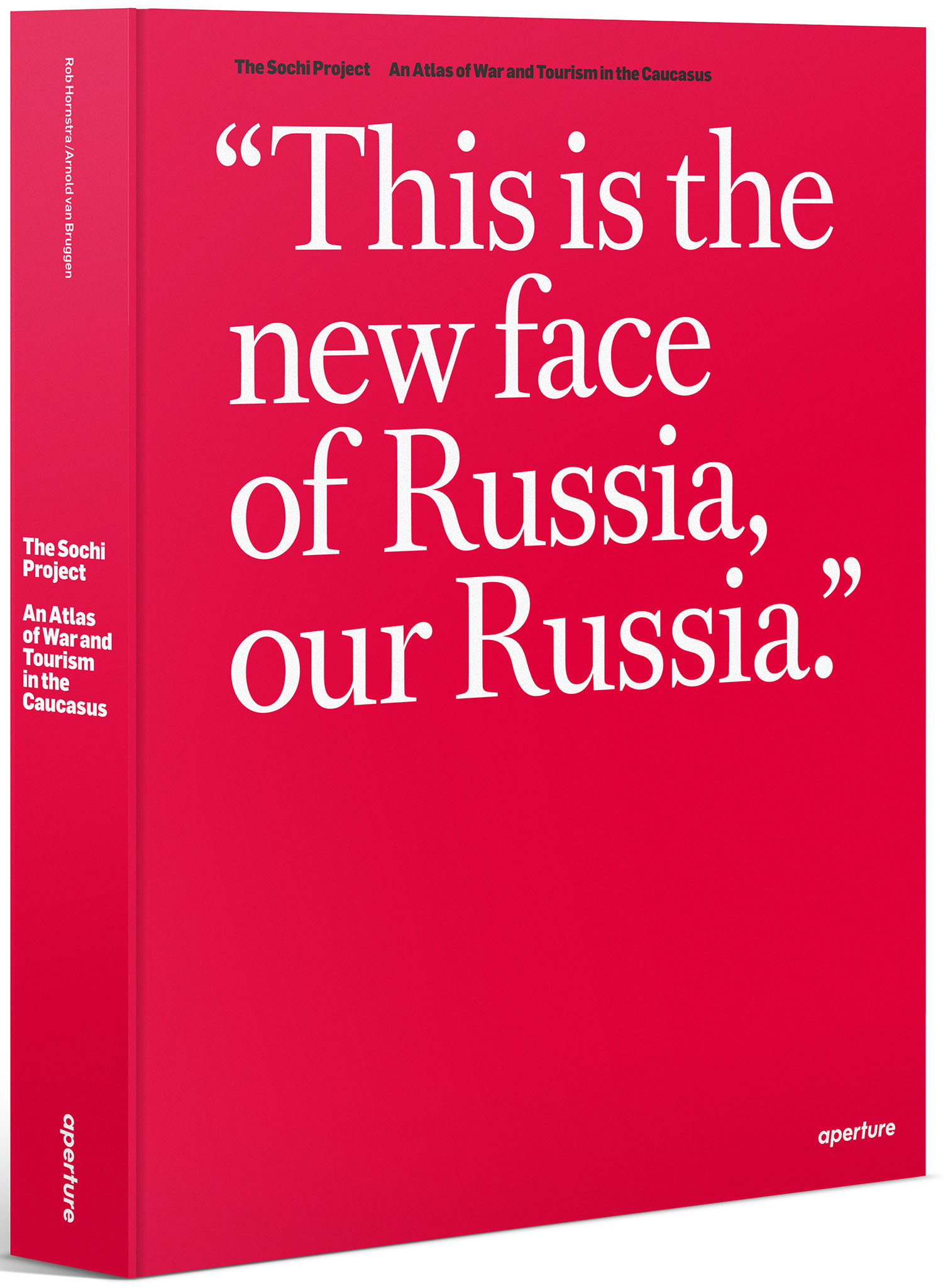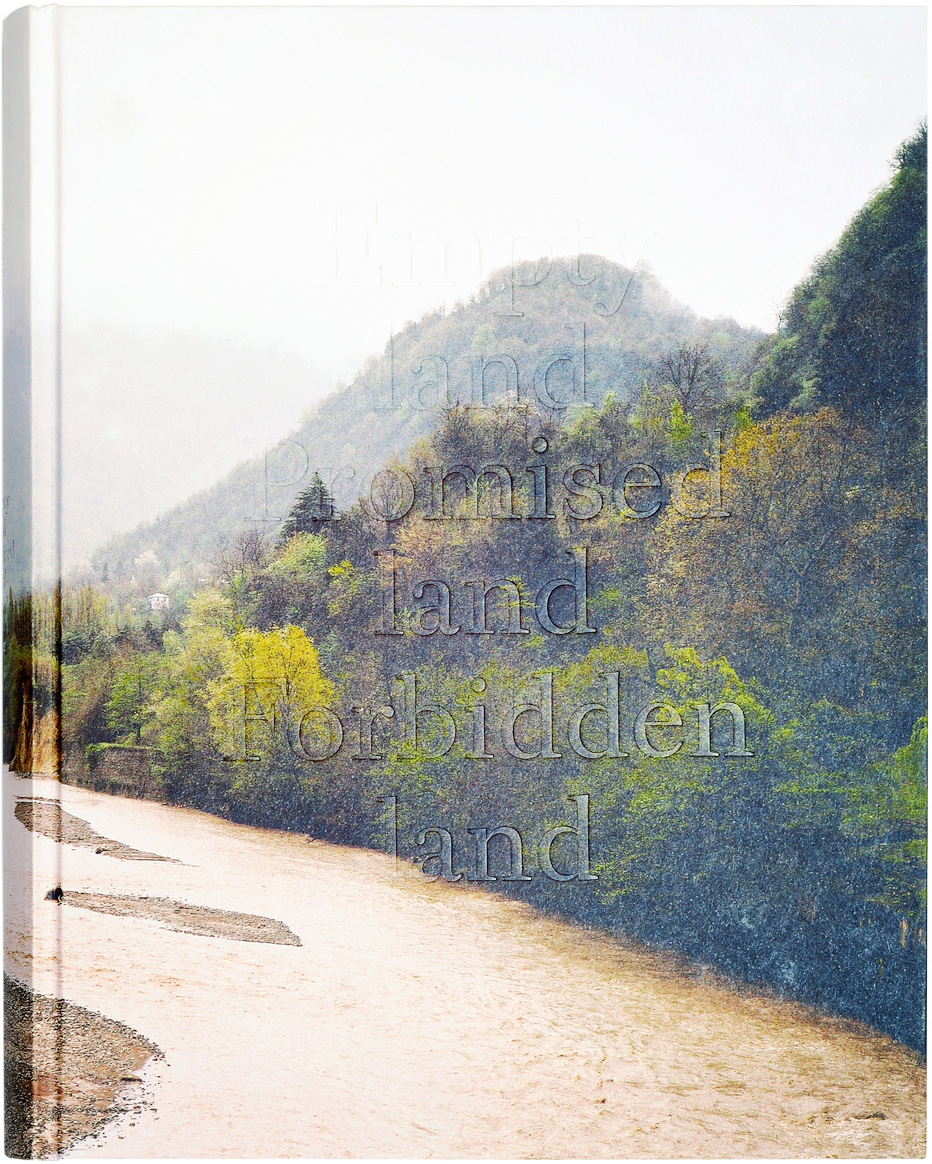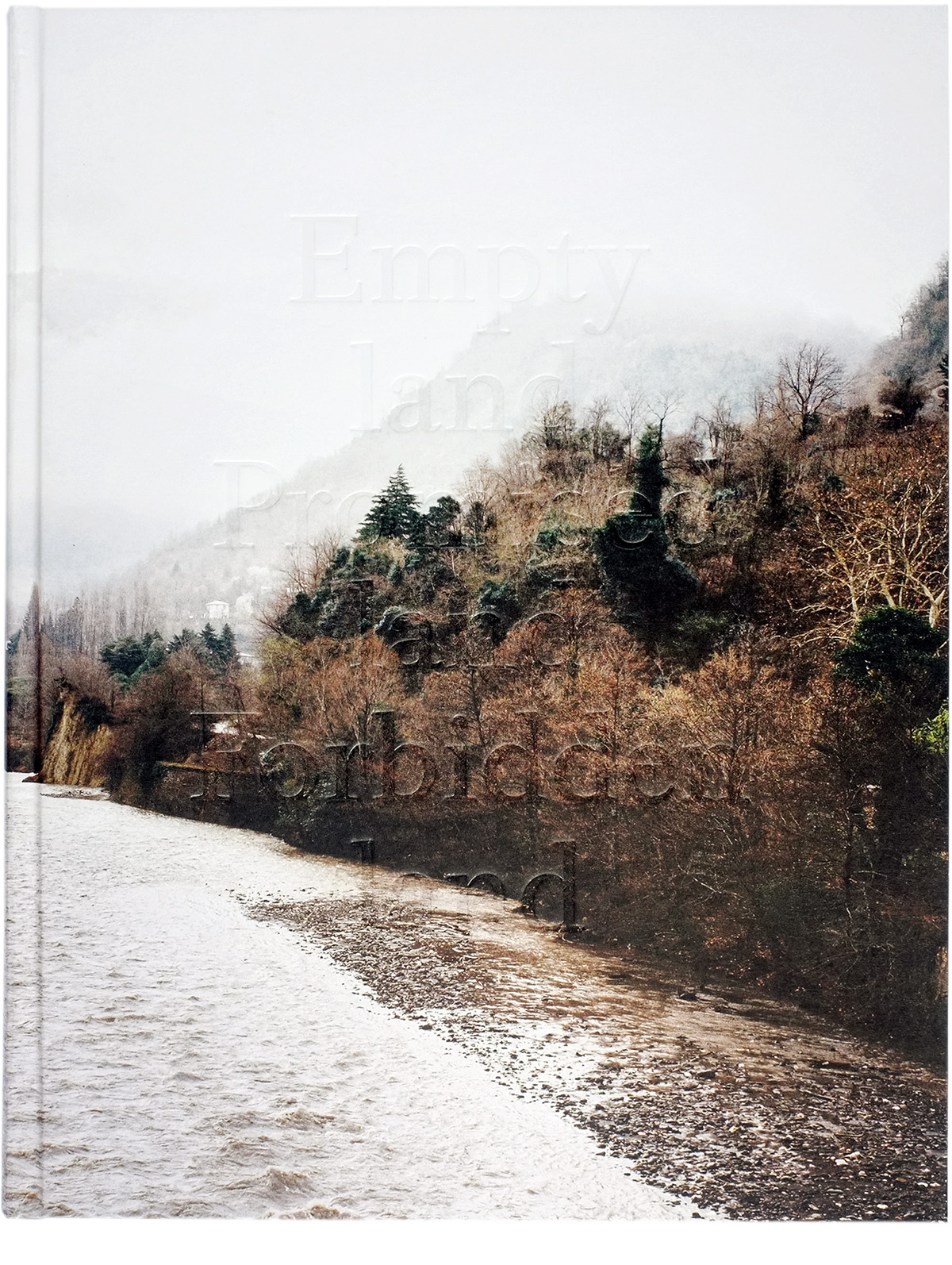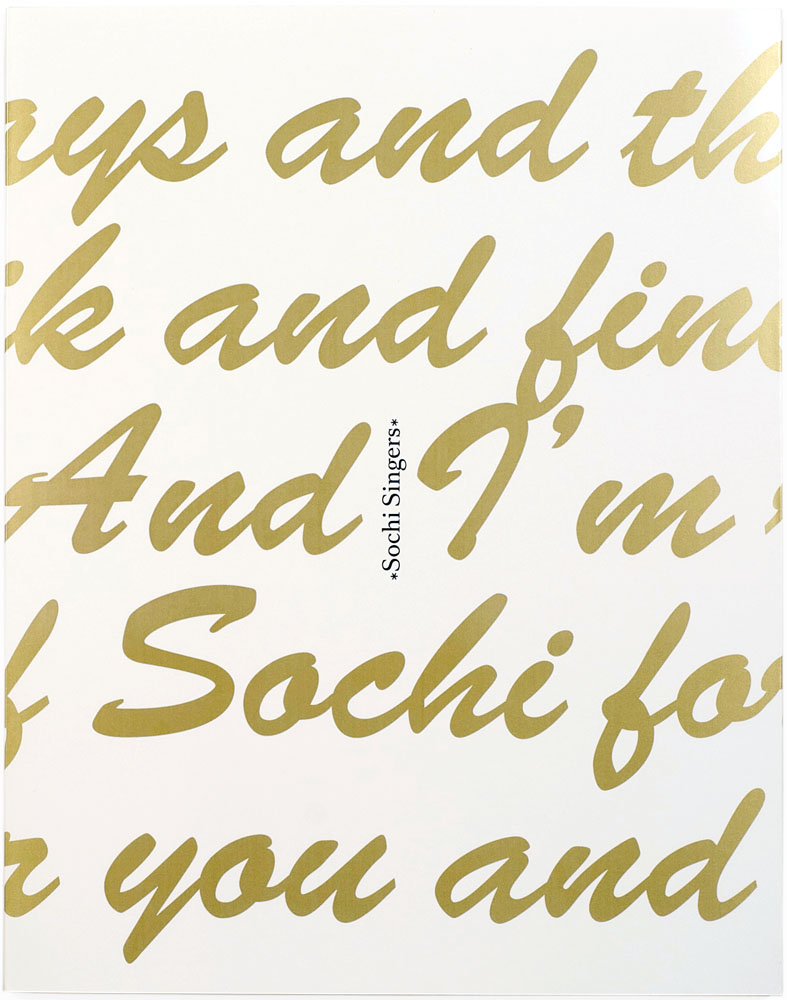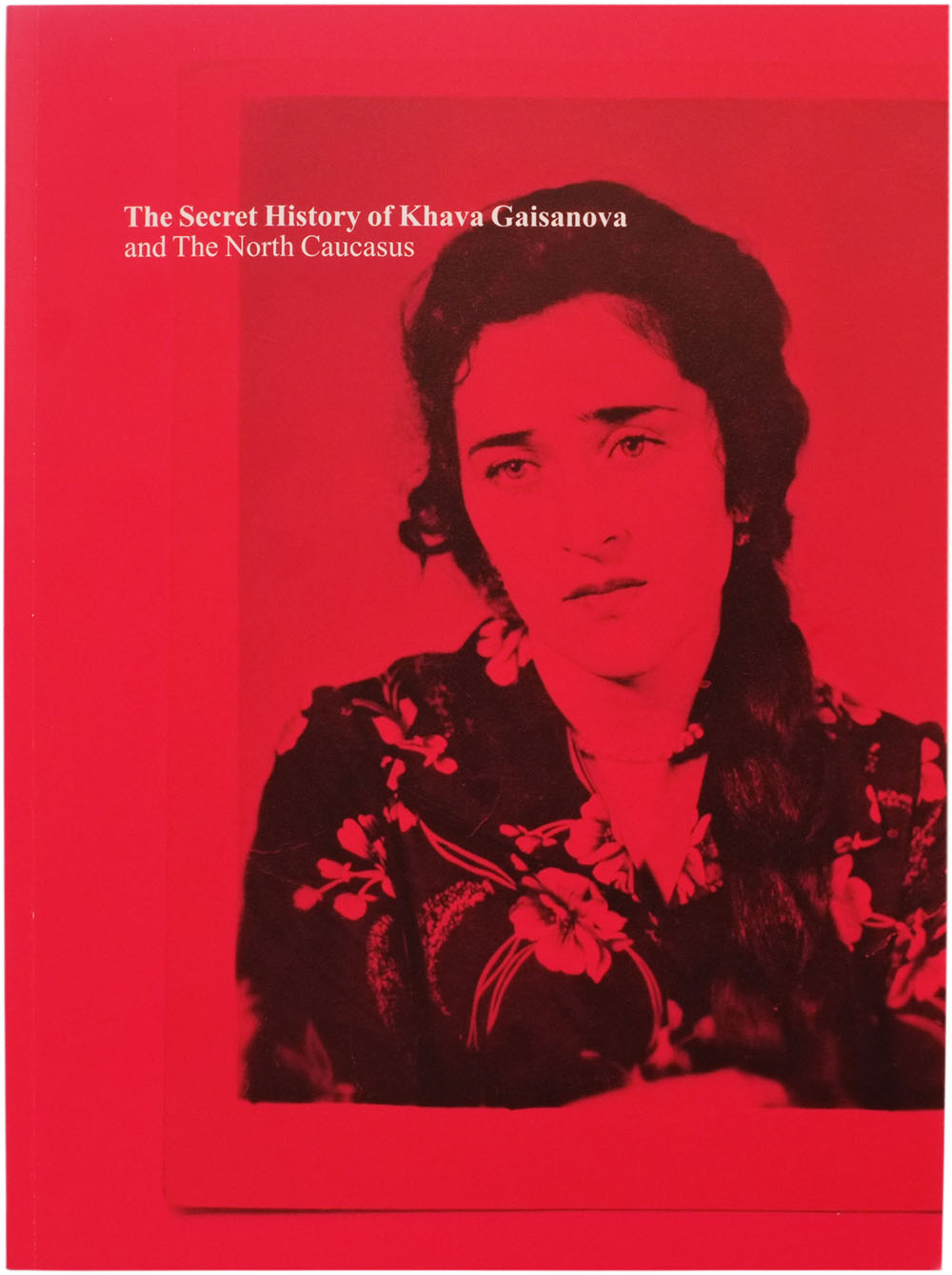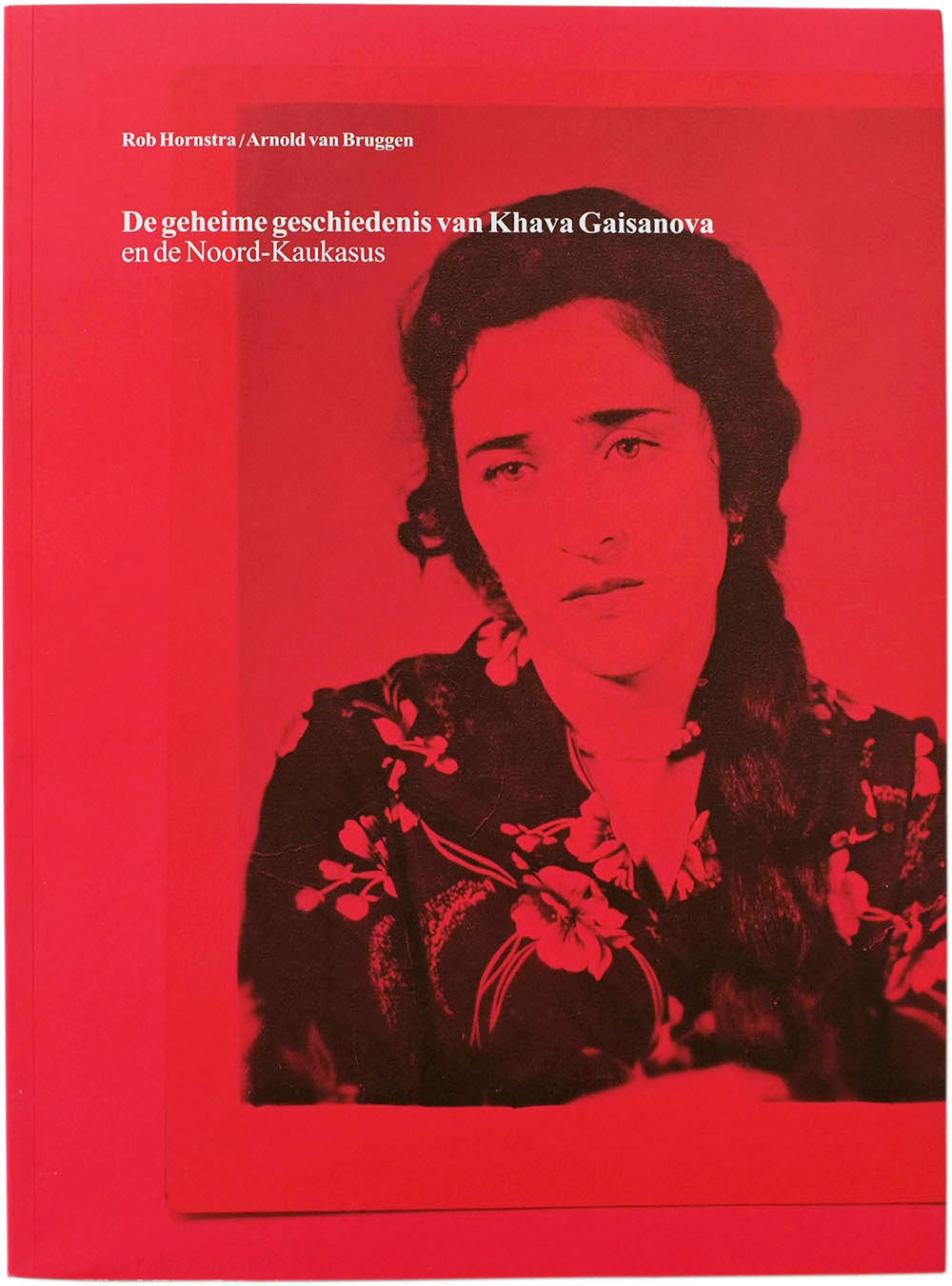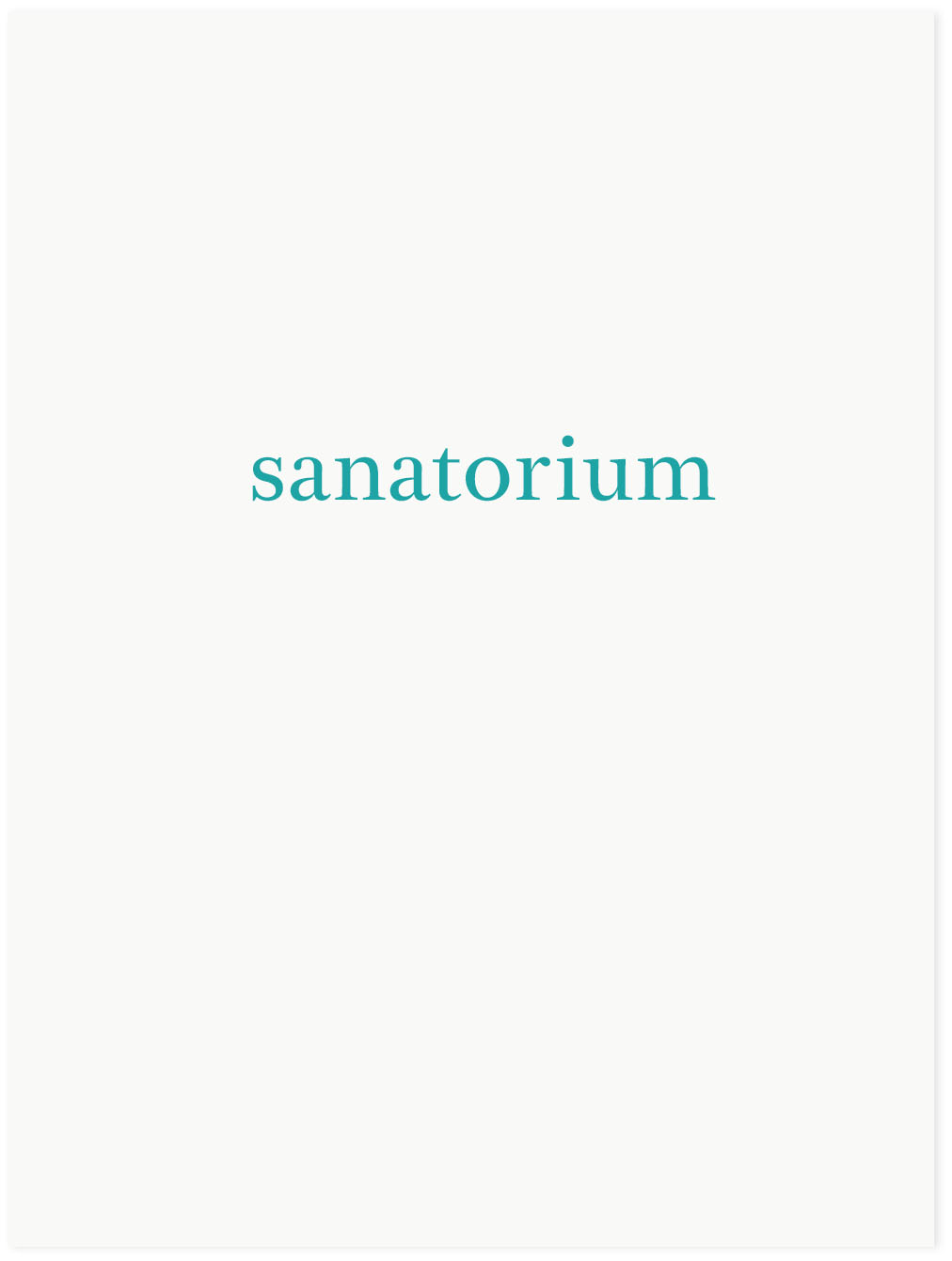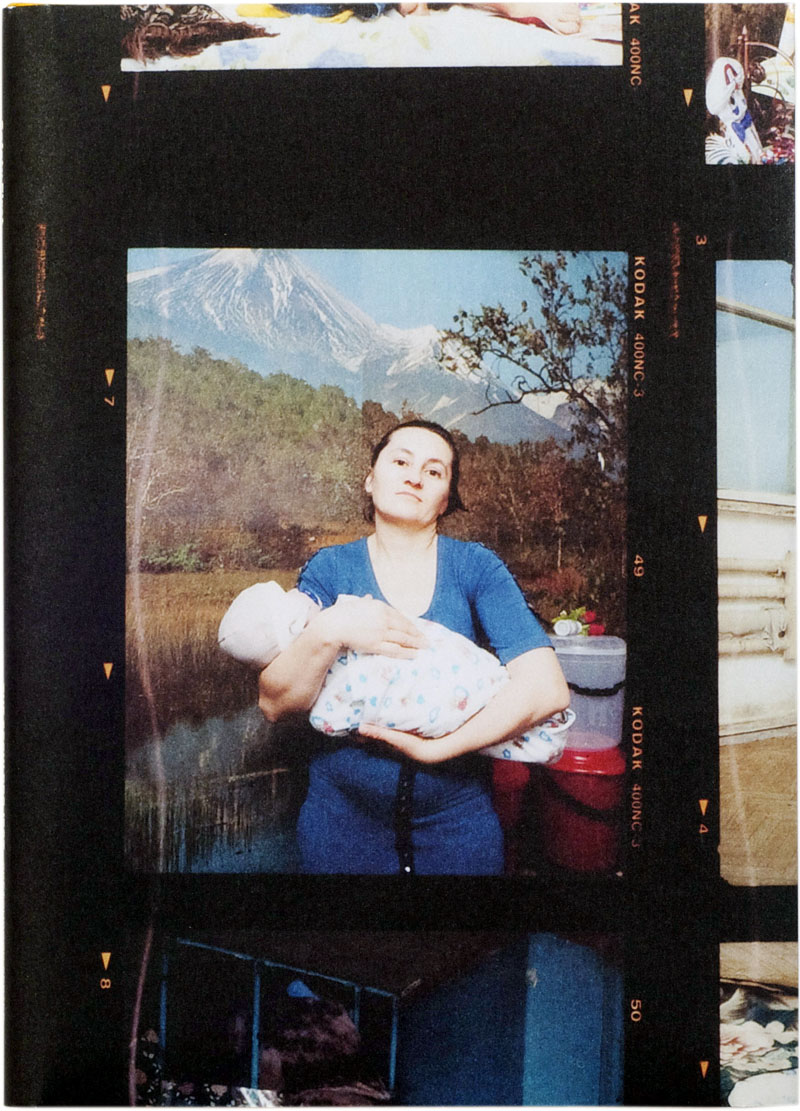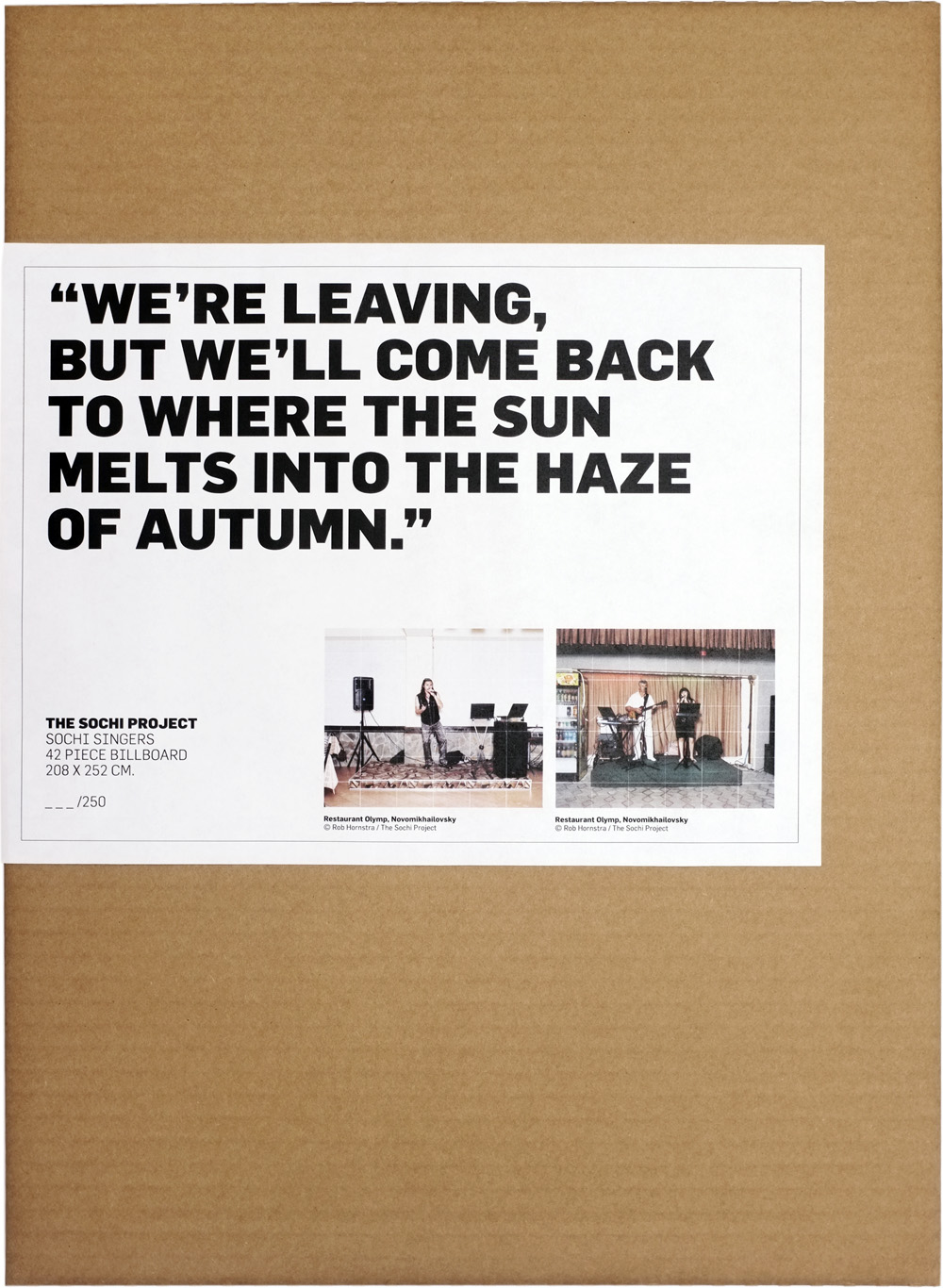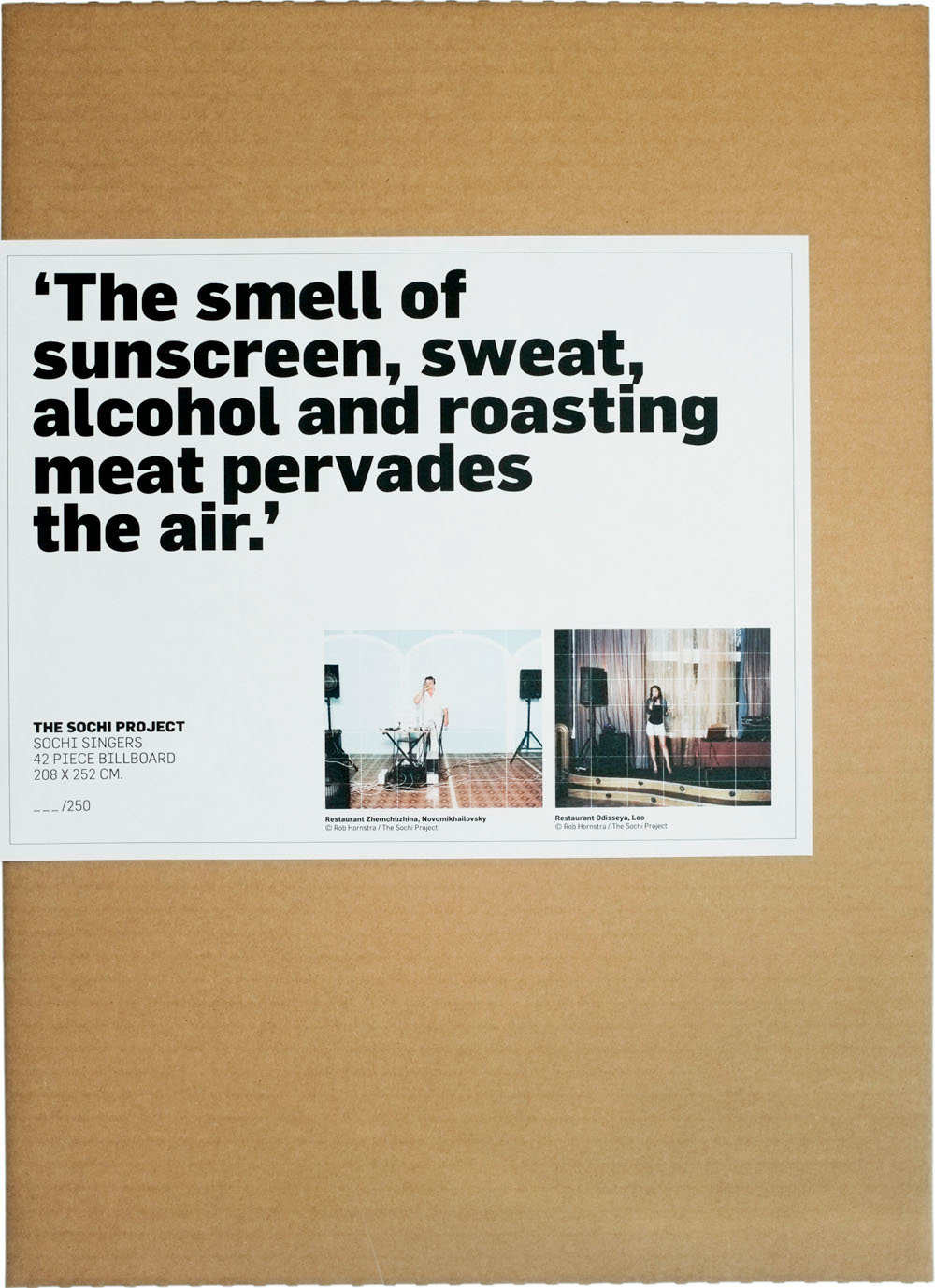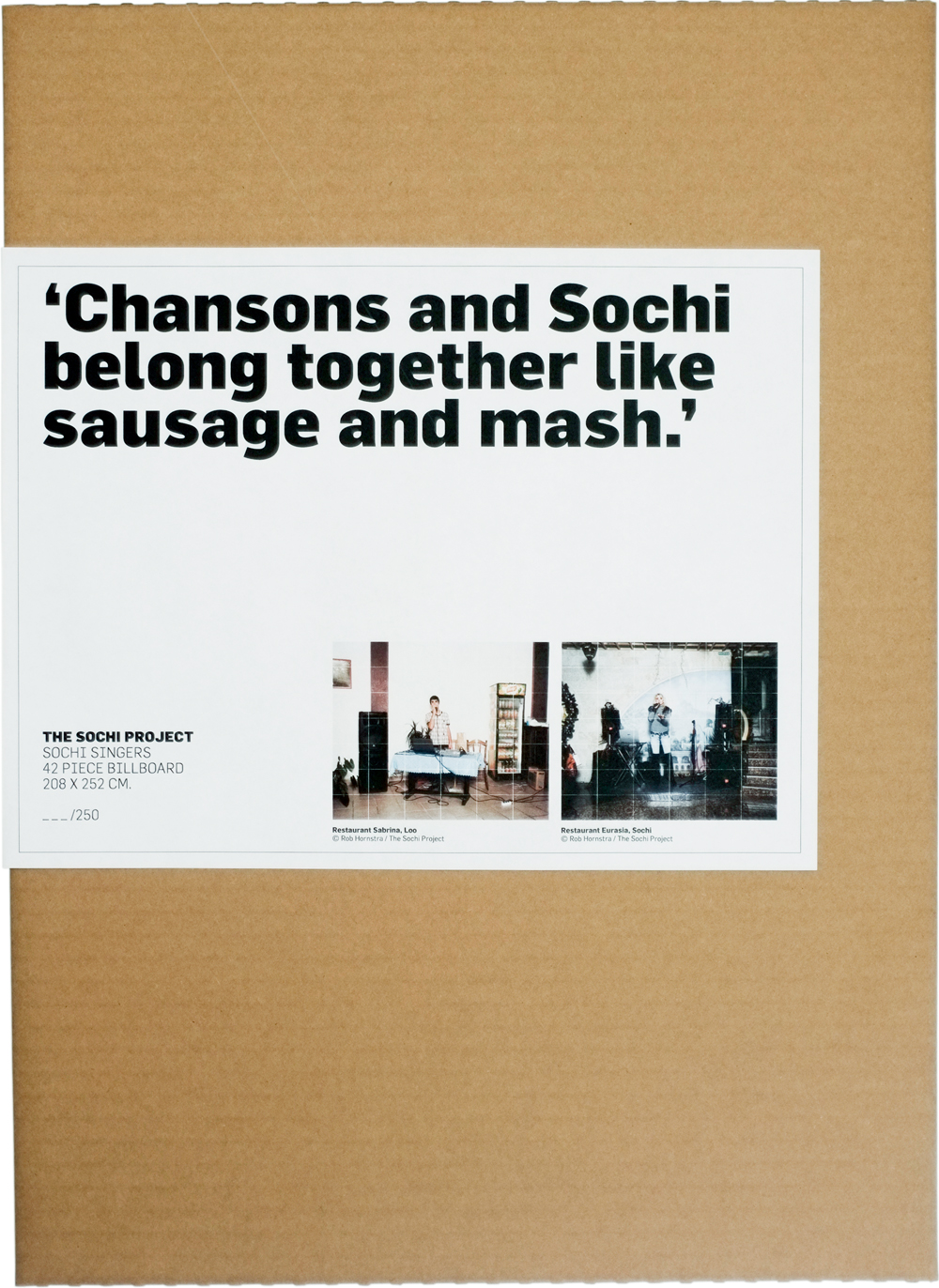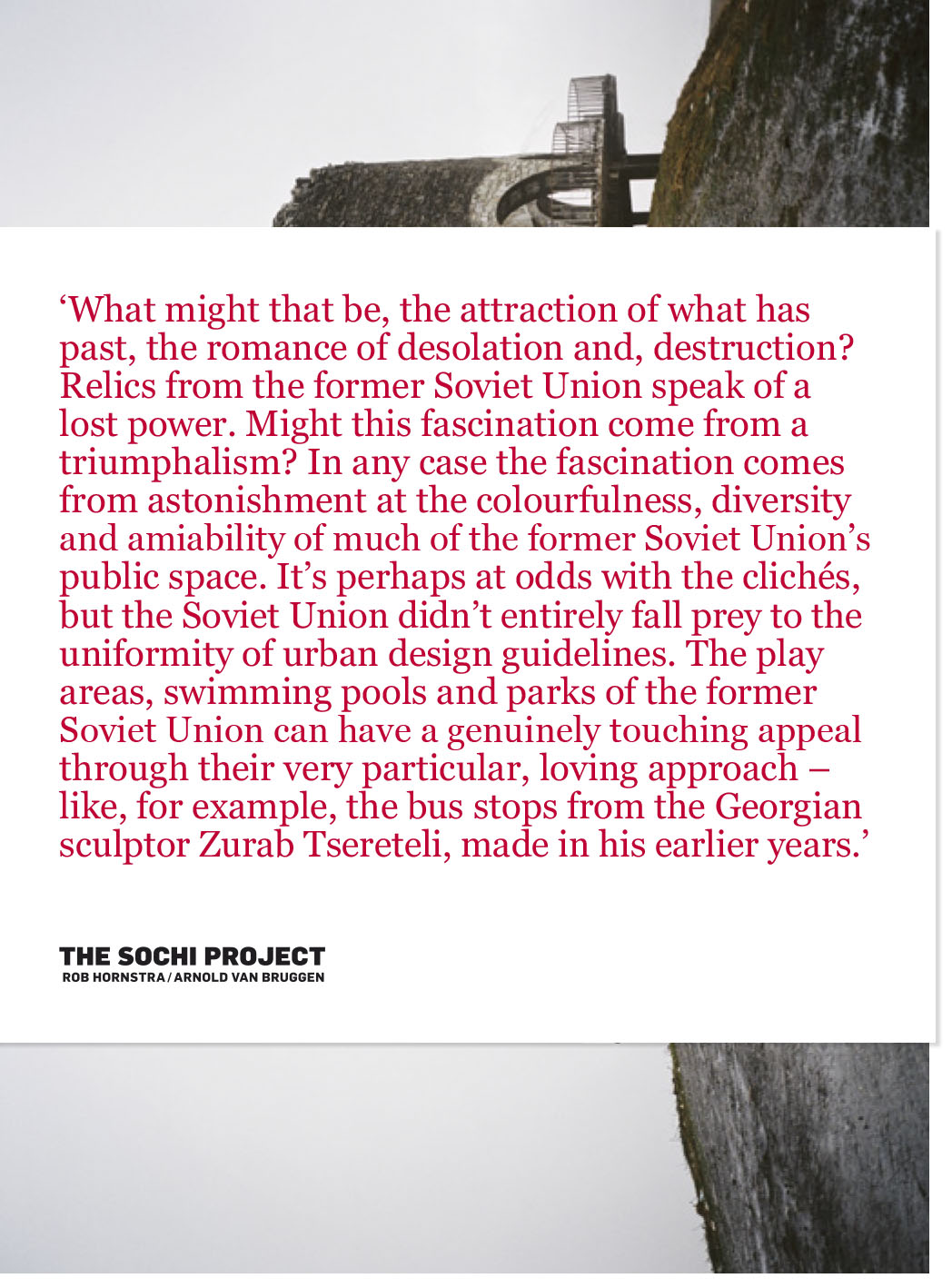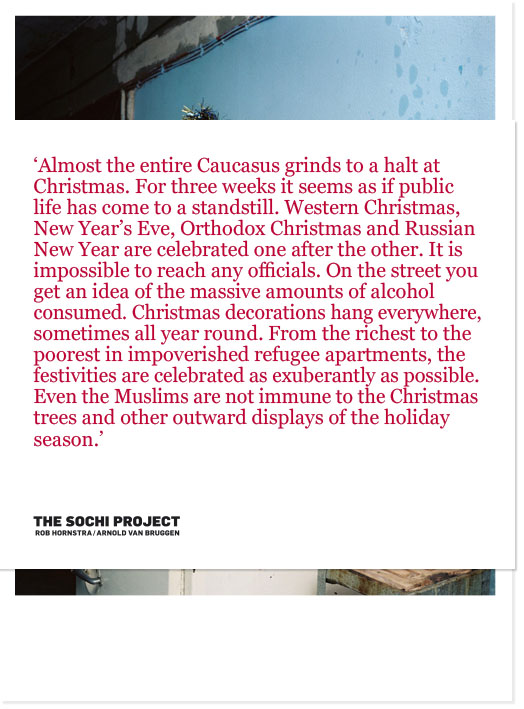Crowdfunding, books & publications, exhibition, website, lectures & workshops
The whole world was watching a dazzling sports tournament costing billions. We wanted to show what was really going on.
Between 2009 and 2014 Arnold travelled through the Caucasus with photographer Rob Hornstra. Like Dream City, it started as a pleasant trip for Vrij Nederland, but the region kept on beckoning and they knew they would have to return there. Later in the year they would have the excuse they needed to do so: just north of the strange little republic of Abkhazia, Putin-ruled Russia wanted to organise the Winter Olympic Games. This would be The Alibi.
The conditions: five years, invest a great deal of time in the various regions and the book at the end had to be a large regional atlas, because Rob and Arnold are big atlas fans.
That was the dream scenario. Oh yes, and complete freedom. No having to write unnecessary stories for Viva or the like, for the money.
It was already quite a challenge, but when the conditions that stemmed from it were taken into consideration, it was clear that traditional media would never be able to afford it. There had to be a solution. Maybe sponsors would be willing to pay, given the subjects concerned: human rights, war, refugees, sport and Russia. There was no shortage of groups with overlapping causes who might be motivated to help; or at least that’s how Rob and Arnold saw it in 2008, the year of Obama’s successful millions x $1 donation campaign.
“An epic body of work ”
From its very outset the Sochi Project needed to be set up as a fully-fledged, professional project. After all, we wanted to establish our own medium. So, before a single article had been published, designers who were prepared to become part of the team and share the risk that it would lead nowhere had to be found. Three designers pitched. Kummer & Herrman in Utrecht showed the most enthusiasm and came up with the most ideas for the campaign. They would take care of all the design for five years and all subsequent exhibition years.
The Caucasus has an incredible wealth of stories. In just under five years, The Sochi Project produced nine books and countless articles. Through their website and making active use of social media, Arnold and Rob tried to generate their own medium and audience before the 2014 Olympics. They did so with lots of Facebook and Twitter activity, giving away as much as possible and reminding people that good journalism costs money, so would they please make a donation. Because building your own audience, preferably all sponsors, guaranteed having a small army of ambassadors.
All this meant that Rob and Arnold weren’t only documentary makers, but also campaigners. At the time, the Sochi Project was the first large-scale, crowdfunded journalism project in Europe. The whole setup with crowdfunding and working with Kummer & Herrman resulted in the ultimate freedom to work. The project has been on hold since Russia declared Rob and Arnold personae non gratae at the end of 2013, but their work, the books and the exhibitions are still doing the rounds. That is the beauty of such long-lasting projects – they can simply run and run.
A wild dance in the Chechen Republic::
“Whichever way you look at it, The Sochi Project is an incredible piece of journalism, both visual and written, and a glimpse of the medium’s future.”
BOOKS AND PUBLICATIONS
Each year, the sponsors would be given an article to thank them for their support. Addicted to books as Arnold and Rob are, these reports soon got out of control. In the first year, they presented the small book Sanatorium, which went on to win the 2010 New York Photo Book Award. Sanatorium was about a fictional week at a sanatorium in Sochi, as Arnold and Rob experienced it. In 2011, there followed a description of the small country immediately to the south of Sochi called Abkhazia, which many believed did not really exist. In Empty Land, Promised Land, Forbidden Land, Rob and Arnold described the country in terms of how it wants to be seen, i.e. as fully functioning, fully-fledged and democratic. The third yearbook was Sochi Singers, an ode to Sochi’s rancid coastal tourism, which is characterised by the smell of beer and kebabs. This book won the Arts and Entertainment category of the World Press Photo Award. The fourth and final self-published yearbook was The Secret History of Khava Gaisanova, which was also published in Dutch by Pegasus. The book recounts the bloody history of the North Caucasus through past events in Khava Gaisanova’s own family. This led to a separate crowdfunding for the protagonist, Khava Gaisanova, who used the money to set up her own shop in her village of Chermen. The latest book, the magnum opus entitled An Atlas of War and Tourism in the Caucasus, was published by Aperture in New York.
Between these jobs, the Sochi Project produced other publications, such as the documentary DIY exhibition newspaper On The Other Side Of The Mountains, about the small village of Krasny Vostok, an impoverished village separated from the Olympic Sochi by mountains and where the factories are derelict, where political Islam is advancing and from which the young people have moved to the cities. In addition, The Sketchbook Series emerged, producing three small books: Life Here is Serious, Safety First and Kiev. Although the stories had no place in other chapters of the project, these books served to raise extra money for the project. A long list of articles in newspapers and periodicals can be found on The Sochi Project website.
The Sochi Project publiceerde bijna tien boeken, culminerend in een door uitgeverij Aperture in NY uitgegeven Atlas of War and Tourism in the Caucasus. Veel boeken zijn op de webshop van The Sochi Project nog verkrijgbaar.
EXHIBITION
Since The Sochi Project started in 2009, Rob and Arnold have also been busy turning the close collaboration between text and photography into exhibition form. Sub-projects like Empty Land, Promised Land, Forbidden Land were given their own exhibition which was available to hire through The Sochi Project and went on a tour of Europe. The documentary newspaper On The Other Side Of The Mountains was conceived as a newspaper-cum-Do-It-Yourself exhibition to meet the growing demand for a mobile and affordable exhibition. For 5 euro people around the world could buy the exhibition and display it on their walls at home or wherever else they wanted. The apotheosis of the Sochi Project was the exhibition for An Atlas of War and Tourism in the Caucasus, whose title was taken from the book and website of the same name. This exhibition travelled through North America, Europe and India until well into 2017. For a general synopsis, see the Sochi Project website.
An Atlas of War and Tourism in the Caucasus in FoMu, Antwerpen.
WEBSITE
Between 2009 and 2013, the website mainly acted as a crowdfunding page where people could sign up to become sponsors and log in to read the latest blogs and stories. Although it worked well as a crowdfunding page, after a while the idea of a pay wall was scrapped. Didn’t the sponsors actually donate to the project to make these stories possible and distribute them as widely as possible? The page was opened up to everyone.
At the end of 2013, Rob and Arnold presented the new and current version of the website on which you can read a chronologically-arranged story split up between the three regions addressed by the project. The eight main sections cover the Caucasus and the influence the Winter Olympics had on everyday events in the North Caucasus and Abkhazia. The current website serves as a reference. In the months around the Olympic Games, this website has been read hundreds of thousands of times. Not only did the project act as a source for anyone interested, it was also used exhaustively by journalists writing background stories to the Olympic Games.
LECTURES & WORKSHOPS
During The Sochi Project, Rob and Arnold gained invaluable experience in the telling of stories and enabling their publication and reach. They can both be booked for lectures and workshops about adventures in the Caucasus, crowdfunding, producing books and making possible projects that had once only been dreamed of. Rob and Arnold have held workshops both together and individually from Vancouver to Delhi and from Helsinki to Barcelona.
Above: lecture in Warsaw, Poland
Left: three day workshop in New Delhi, India



